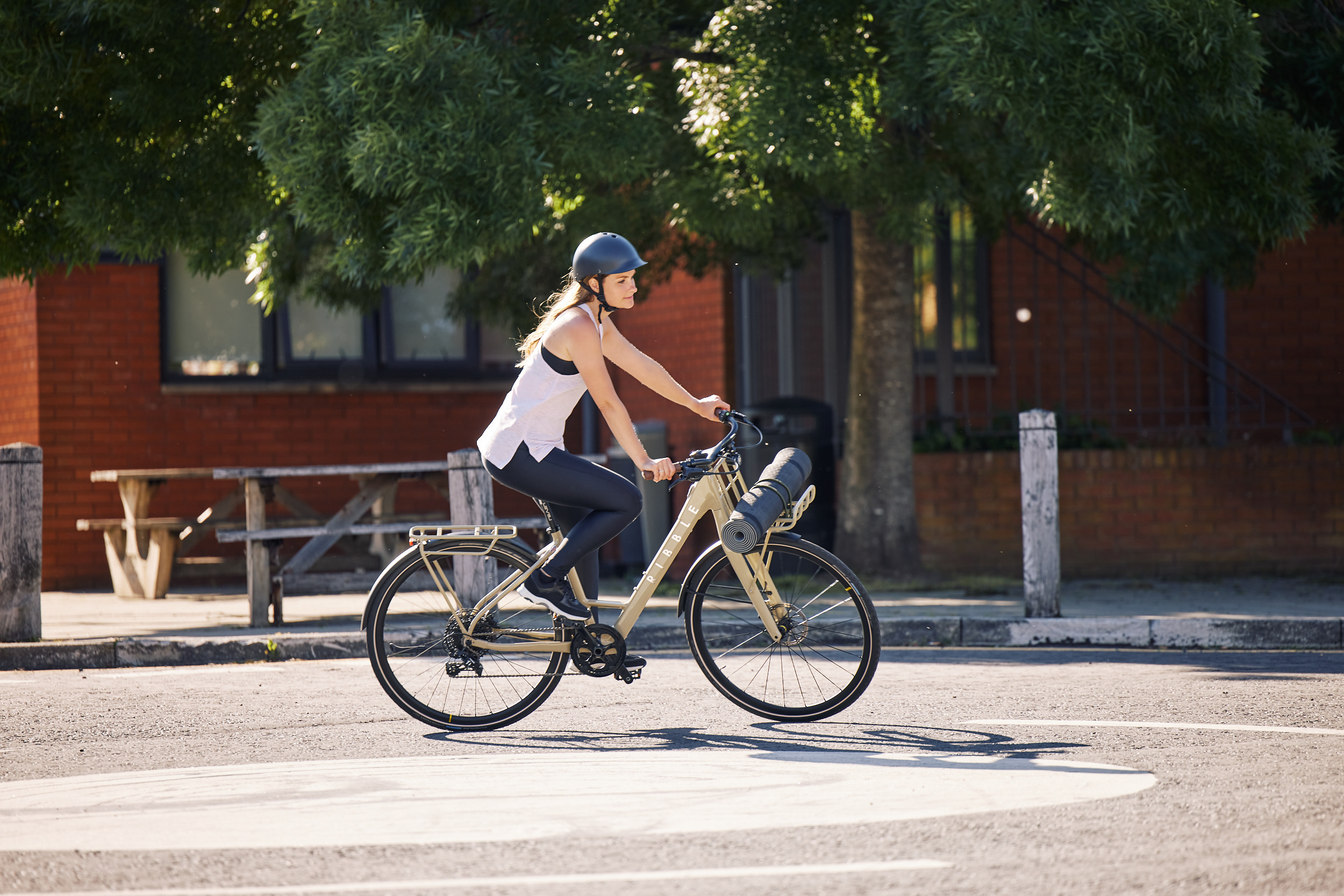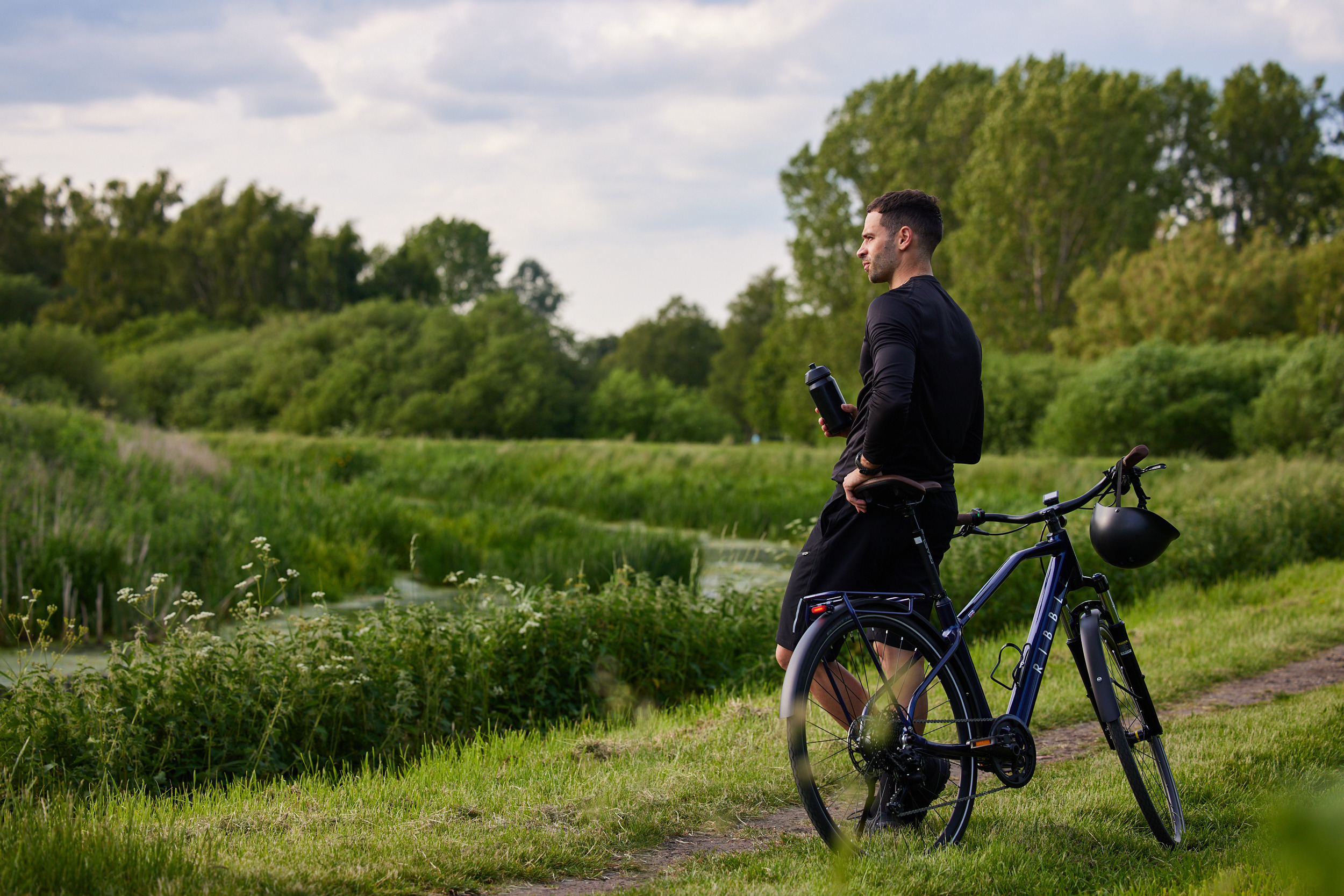
Electric bikes have now advanced to the point where they can now be viewed as a viable form of transport for short to medium-distance journeys. However, much confusion and misinformation still surround these marvels of engineering. Questions abound about their uses, functions, legality and what they offer. So let's tackle these and in doing so, prove to you why an electric bike may just be right for you.
Why an e-bike?
In a world where everything is growing prohibitively expensive, we're all looking to make cost savings wherever possible. E-bikes are just one of the cost-cutting measures people are exploring to reduce their weekly expenditures. Take Germany for instance, where e-bikes are now viewed as a more attractive transport proposition than other EV's (electric vehicles).
In addition to the cost savings associated with active travel, e-bikes offer several other benefits. They're kinder to the planet and provide a great way to get around the city and beyond whilst reducing your carbon footprint. Numerous studies have conclusively proved that riding a bike regularly boosts your physical and mental well-being. In this article, we explore e-bikes and outline what they bring to the table.
What is an electric bike?
The e-bike people most commonly see advertised online is the pedal-assisted motor system, or PEDELEC for short. In all respects, it is a conventional bicycle, albeit with a motor, to provide you with an extra power boost when tackling any gradients. However, it isn't simply a question of pushing a button, sitting back, and taking it easy, far from it.
A pedal-assist e-bike relies on the rider to do most of the work. The motor amplifies your pedalling efforts, providing a power boost when needed. Take the Ribble e-bike range, for instance. In terms of aesthetics alone, you would be hard-pressed to tell them apart from a conventional bike.
The major reason for this is that each comes fitted with the MAHLE SmartBike X35+ drive system. Its compact design results in the X35 being one of the lightest electric bike systems on the market today. The system, including all relevant wiring, battery, and hub motor, barely troubles the scales, weighing just 3.5 kg.
This mind-boggling figure is achieved by way of some awe-inspiring feats of engineering. A slimline Panasonic battery is discreetly hidden within the frame's downtube and is linked to a compact motor mounted within the rear wheel hub. To propel the bike, you push the pedals like any conventional bike.
It differs, however, because you can call upon an extra 250W of power assistance at the push of a button. There are three assistance levels to choose from low, medium, and high. Thereby giving you the option to decide how much or little assistance you need relative to the terrain, or to conserve the battery on those all-day epics.

Engineered for off-road riding, the Gravel AL e sets a new benchmark for power-assisted all-terrain performance
Who rides e-bikes?
First, let's deal with the question of who benefits from an electric bike the most. Novice cyclists looking to take cycling up as a hobby can build up fitness at a pace to suit them. Then, of course, there are those pesky gradients. When somebody first takes up cycling, hills can seem like an impenetrable barrier to enjoyment.
Consequently, many beginners avoid them like the plague, which can be a huge mistake. Not only does summiting a climb deliver a huge sense of accomplishment, but it also affords you some stunning views of your locale. Even the most fearsome climbs can be conquered with the extra assistance of an e-bike.
It should be noted, however, that you still have to put in the lion's share of the effort. The bike won't do the work for you. It will only ever amplify your efforts. So you still get a great workout to achieve your fitness goals. Thanks to the assistance levels offered, you get to choose how much, or little, effort you wish to expend on every ride.
Time waits for no man
In a similar vein, anyone who is looking to take up cycling after a prolonged layoff will benefit from an e-bike. Whether this is the result of a long layoff from cycling or simply as a low-impact aid to recovery from serious illness or injury. Then there are the seasoned riders who struggle to keep up with faster riders on group rides.
Being dropped on the climbs is never fun. But, with an extra 250W of power assistance underfoot, you could be the one cresting the climb first, not the one languishing at the rear. The road to fitness can be painful, but the e-bike makes the challenge of doing so a more attractive proposition.
Cycle commuting
The daily commuter can also enjoy the benefits of an e-bike, both financially, and for physical/mental health. Of course, the initial outlay for an e-bike can be more than a conventional bike. But this is more than recouped when you factor in the transportation costs incurred throughout the year.
And if your place of work does not run to shower facilities, changing out of your sweaty kit and into work attire is a less-than-ideal scenario. The e-bike allows you to take a more leisurely approach to cycle commuting. Less effort = less sweat = fresher work clothes. The key to any e-bike is that the ride is as easy or as hard as you want it to be!

The Endurance SL e looks and rides like a performance carbon road bike. Visually you'd be hard-pressed to tell it apart from its sibling the Endurance SL R. Which is which?
Affordability
Cost is the biggest and most prohibitive factor facing most people considering an e-bike purchase. While prices have decreased substantially in recent years, you can still reasonably expect to pay in the region of £2000+ for one. Of course, you can always find electric bikes that cost less than £1000.
However, it should be noted that they are often built using budget components that will wear out in short order. So any savings you make in the initial outlay may be swallowed up by maintenance costs and replacement parts. They are also liable to weigh about as much as a small family car, which makes riding them without power assistance almost impossible.
Spending somewhere in the region of £2000 assures you of a good quality bike with a tried-and-trusted motor system. Ribble e-bikes, for instance, start at approximately £2199. For this, you are getting one of the lightest and most cutting-edge electric bikes available today.
Heavy metal?
Oh, and did we mention that Ribble offers the lightest range of electric bikes in the world? With builds starting from as little as 10.5kgs, even our electric hybrid models only weigh in at about the 12-15kg mark. To put this into context, that's about the same as most of the hybrid bikes that many commuters and recreational cyclists first start their cycling adventures on.
Compare this to many similar e-bikes in its class, and you will find that they often weigh as much as 20-30kg. That's a whole lot of excess weight to be lugging around. Opting for a much lighter e-bike means you can choose to ride with assistance on or off. Dialling down the assistance or turning it off entirely preserves the battery power, letting you ride farther and for longer.
Cycle to Work
The government has also realised the benefits that the e-bike offers to the population and the planet. As a consequence, they amended the rules of the Cycle to Work Scheme to make buying an e-bike more affordable. Previously the scheme was capped at £1000, meaning you could only make savings of 25-39% on this amount.
However, in 2019 this cap was lifted. In doing so, e-bikes became instantly more affordable, allowing employees to obtain one and spread the cost via monthly deductions from their salary. Not only does the scheme now allow e-bike's to be purchased but it also means that the only limit is that set by your employer.
You can find more details about the scheme and how it works here.

The Ribble Hybrid AL e Step-Through is a one-bike-to-do-it-all e-bike, super-capable on-road and just as capable off it too.
Common myths debunked
Do you know how electric bikes work? If not, then you're not alone; fully 65% of people recently surveyed stated that they were unsure how they worked. You may even have read or been offered incorrect information regarding electric bikes. Here, we set the record straight about some of the most common myths surrounding e-bikes.
The motor engages at the push of a button, and you do not have to pedal. Absolutely and conclusively false: Any e-bike must be fitted with a pedal-assist motor system (pedelec) to ride on UK roads. The bike must be propelled by the rider at all times and not use motor power alone. When activated, the motor delivers an extra boost to your pedal stroke. However, just like any conventional bike, when you stop pedalling, it will come to a stop.
You need to have a licence to ride one
Again false. A pedal-assisted e-bike falls into the same category as any other bicycle. Therefore, a licence is not required. (However, we advise you to check your local laws/regulations if you reside outside the UK).
You need insurance to ride one
False. There is no requirement to take out insurance for an e-bike. Though we highly recommend taking out some form of third-party insurance from companies like Pedalsure or British Cycling. It is by no means a legal requirement. However, it does provide an extra form of protection in the event of an accident.

Most frequently asked questions
Do I need to tax the bike?
Absolutely not. The tax you pay on your car (vehicle excise duty) is based on emissions, and your bike has zero emissions. You might, but the bike does not!
Do electric bikes require specific charging points like cars?
Not at all. You can charge up your electric bike from any household power socket. Simply plug it in at home or work to recharge. If you wanted to, you could even take your charger with you and ask to charge it at a friendly cafe stop (with the owner's permission, of course!).
Will I have full control over the bike?
Absolutely. You might say it's like riding a bike… because it is! You can activate the assistance or deactivate it at the push of a button. Additionally, because it is a pedal-assist system, even if you stop pedalling, the bike will come to a stop just like any other bike.
Can I ride it in the rain?
All electric components used on our e-bikes are IP54 rated. They can be used when the weather is inclement and, to this end, are splash-proof. They should not be fully immersed or subjected to pressurised water from a hose pipe or jet wash*.
*Subject to guidelines being followed in the user manual; this includes closing the charging port cover, not power washing the bike, submerging the bike during rides etc.
If you would like to read more FAQs about our e-bikes, simply click here and scroll to the bottom of the product page for a comprehensive list of product questions.
We hope you found this article useful; if you have any further questions about our range of electric bikes, why not get in touch with one of our Live In-Store Experts. Or, if you live in close proximity to one of our five state-of-the-art showrooms, why not pop in for a chat? You can view the bikes in person and enjoy a world-class retail experience. Click here for details of the showroom locations.
What are the differences between the models of Ribble e-bikes? Find out here.
Interested in Cycle To Work but unsure how it works? Find out everything you need to know here.





